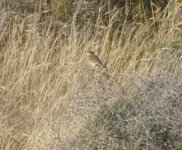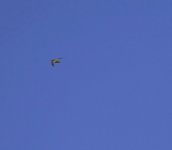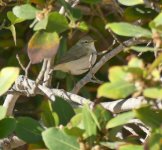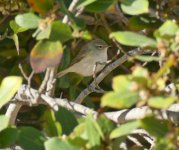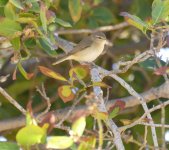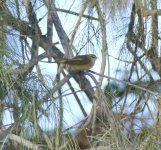I don't think the phyllosc is a 'safe' tristis, although it does look the part in some ways (pale underparts, good super).
Going against it are:
Too much green in the mantle and scaps (some is tolerable in tristis but this is a lot)
Too much yellow in the super (again, some is tolerable in tristis but this is a lot)
Lacks any warm tones on the face
Bare parts don't look strikingly dark enough - although again, there is some variation here
Upper part of eye ring dominates supercilium, rather than the other way round.
Any more pics of the bird Ken? A useful feature at this time of year for tristis is that it should be in moult - so missing/scruffy tertials, tail feathers etc.




